The scenarios of Chains Of War
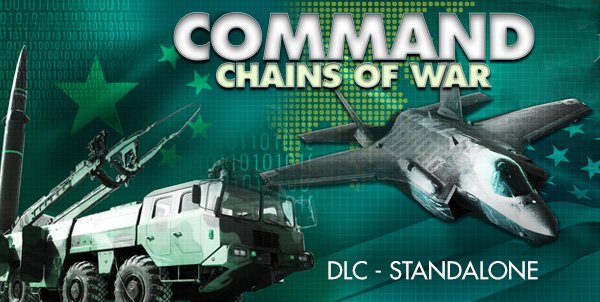 The Command v1.12 update, and its companion “Chains Of War” DLC pack are now in the home stretch for their May 18th release. We covered the new groundbreaking features in the DLC, such as communications disruption, aircraft damage , the new weapon types and the immensely popular cargo, amphibious and airdrop ops. Ultimately though, it’s the scenarios that drive a simulation’s narrative. So let’s take a look at the campaign and standalone scenarios comprising the new DLC release.
The Command v1.12 update, and its companion “Chains Of War” DLC pack are now in the home stretch for their May 18th release. We covered the new groundbreaking features in the DLC, such as communications disruption, aircraft damage , the new weapon types and the immensely popular cargo, amphibious and airdrop ops. Ultimately though, it’s the scenarios that drive a simulation’s narrative. So let’s take a look at the campaign and standalone scenarios comprising the new DLC release.
“Chains Of War” campaign
 Blue Dawn: The uneasy “peace” that has lasted for 65 years across the Korean DMZ is about to be shattered, as the DPRK is mobilizing for an all-out attack. NK preparations have not gone unnoticed, and now that the war-warning indications are unambiguous, South Korean forces must put decades-old contingency plans into effect.
Blue Dawn: The uneasy “peace” that has lasted for 65 years across the Korean DMZ is about to be shattered, as the DPRK is mobilizing for an all-out attack. NK preparations have not gone unnoticed, and now that the war-warning indications are unambiguous, South Korean forces must put decades-old contingency plans into effect.
North Korea enjoyed a great deal of military and public relations success in 2010, with the sinking of ROKS Cheonan and the artillery strikes on Yeonpyeong island on Korea’s west coast. Not only did the North Korean public perceive them as military victories but South Korea, US and Japan were perceived as weak and malleable by demonstrations of force. It was a lesson that a now nuclear capable Kim Jong-un would try and leverage again. Unfortunately for him, forces south of the DMZ were in motion as well to beat him to the punch. The first task was to preemptively strike at the most immediately threatening elements of the North Korean arsenal. The clock was ticking!
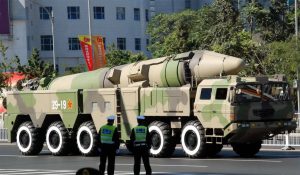 God Of War: The preemptive SK strike on N. Korean forces was a clear military victory, but had terrible political ramifications. Chief among them was the beginning of gradual American disentanglement from the Far East region, and the concurrent rise of Chinese power and influence. When Chinese defense and energy security experts looked at a map, they saw two lines of nations and islands that must be brought under Chinese control. The line runs from Vietnam to Japan and includes the Spratly Islands, Taiwan, the Philippines and the Ryukyu Island chain. The second line runs from northern Japan far south through the Mariana island chains to the eastern Indonesian Islands. Currently China’s rivals and adversaries controlled most of these two lines, which in effect contained China behind a wall of sea and air power. In a twist of historic irony, the first domino on the board was Vietnam.
God Of War: The preemptive SK strike on N. Korean forces was a clear military victory, but had terrible political ramifications. Chief among them was the beginning of gradual American disentanglement from the Far East region, and the concurrent rise of Chinese power and influence. When Chinese defense and energy security experts looked at a map, they saw two lines of nations and islands that must be brought under Chinese control. The line runs from Vietnam to Japan and includes the Spratly Islands, Taiwan, the Philippines and the Ryukyu Island chain. The second line runs from northern Japan far south through the Mariana island chains to the eastern Indonesian Islands. Currently China’s rivals and adversaries controlled most of these two lines, which in effect contained China behind a wall of sea and air power. In a twist of historic irony, the first domino on the board was Vietnam.
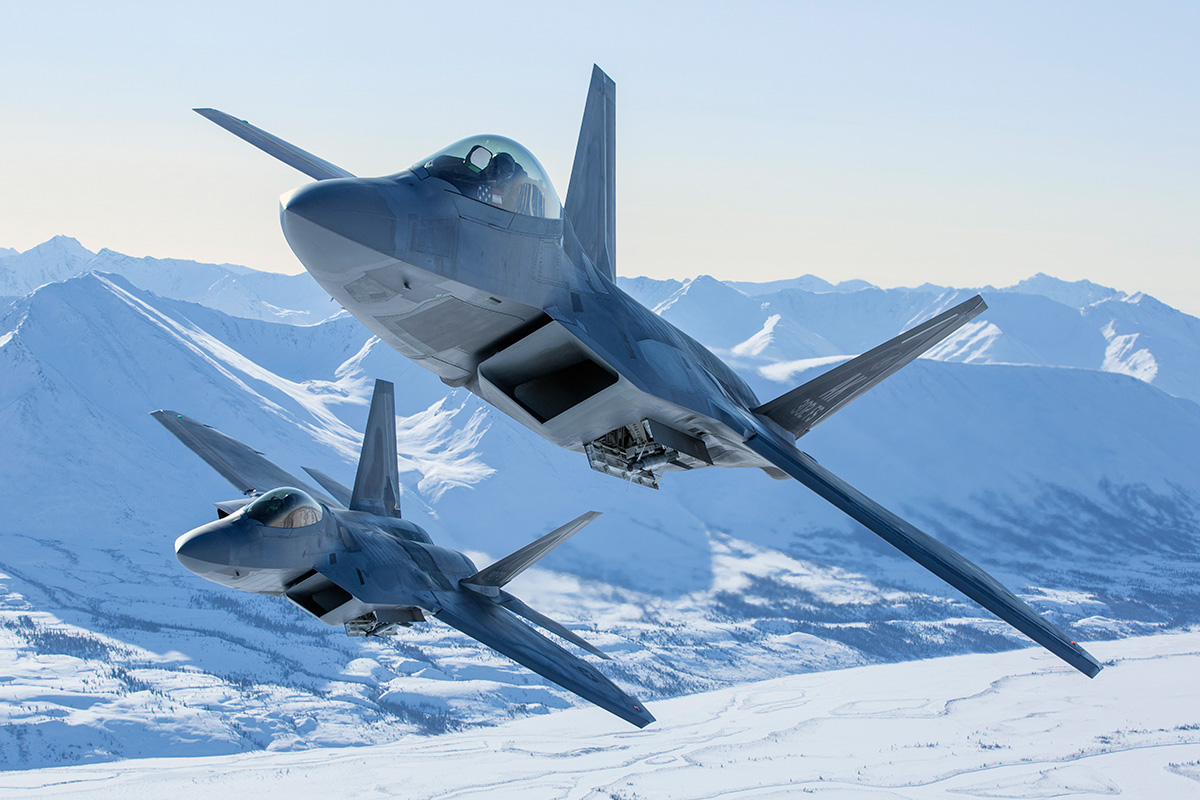 Push: Intelligence collection in the modern world is not always about finding a needle in haystack but rather finding a needle in a pile of needles. The United States and its allies failed to see beyond the Vietnamese attack to greater Chinese ambitions in the Pacific and the looming start of a great war.
Push: Intelligence collection in the modern world is not always about finding a needle in haystack but rather finding a needle in a pile of needles. The United States and its allies failed to see beyond the Vietnamese attack to greater Chinese ambitions in the Pacific and the looming start of a great war.
The first line of defense in the Pacific for the better part of decade was the US submarine force. Despite drawbacks, decommissionings and considerable pull from War on Terror operations worldwide, the US Pacific fleet managed to position forces to act as invisible sentinels able to respond quickly to Chinese aggression and movements. It was the only force largely available and positioned well at war start, and would be regarded historically as the US “ace in the hole” in the critical battles to come. When the PLAN sortied two of its valuable ballistic missile submarines, shadowed as usual by US submarine assets, things took an ominous turn.
 Salvo: The Chinese leadership was very happy over what had transpired over the last few days. The Vietnamese Airforce and Navy were effectively destroyed, leaving its army to mobilize relatively undefended. While the UN condemned the attack, Vietnamese diplomats were already seeking a peace and way to end “a great misunderstanding of intentions”. They hoped it would at least give the Vietnamese Army time to mobilize and dig in, and at best end the conflict all together. One key Chinese enemy was now removed from the board, and they could now deal with the rest.
Salvo: The Chinese leadership was very happy over what had transpired over the last few days. The Vietnamese Airforce and Navy were effectively destroyed, leaving its army to mobilize relatively undefended. While the UN condemned the attack, Vietnamese diplomats were already seeking a peace and way to end “a great misunderstanding of intentions”. They hoped it would at least give the Vietnamese Army time to mobilize and dig in, and at best end the conflict all together. One key Chinese enemy was now removed from the board, and they could now deal with the rest.
The consolidation of US forces into a small number of big bases in the western Pacific during the ’90s and ’00s made perfect peacetime economic sense, but against a sophisticated adversary it created a unique vulnerability that had never previously existed. Emerging from the Vietnamese expedition largely unscathed, the Chinese military was now ready to take on its main strategic adversary in the region with a single decisive attack.
 Nightmares: US, Japanese and South Korean forces had received a devastating blow. A massive, precise Chinese attack was immediately followed up by North Korea with a large rogue strike of its own using a mix of conventional and chemical warheads, in some cases striking bases but in others the population centers around them. Principal installations across the Pacific had been significantly damaged, with hardware destroyed and personnel lost. Civilian loss of life was great in both South Korea and Japan, overwhelming emergency services and hospitals. Chinese and North Korean cyber and space forces went into action, causing significant disruption in the US military’s ability to orient, communicate and command its forces.
Nightmares: US, Japanese and South Korean forces had received a devastating blow. A massive, precise Chinese attack was immediately followed up by North Korea with a large rogue strike of its own using a mix of conventional and chemical warheads, in some cases striking bases but in others the population centers around them. Principal installations across the Pacific had been significantly damaged, with hardware destroyed and personnel lost. Civilian loss of life was great in both South Korea and Japan, overwhelming emergency services and hospitals. Chinese and North Korean cyber and space forces went into action, causing significant disruption in the US military’s ability to orient, communicate and command its forces.
But American forces were down, not out: The US enjoys several unique global power projection capabilities that can be used to rapidly springboard a powerful counter-attack. Many of these forces were already in motion and would turn into the DPRK leadership’s final nightmare.
 The One-Two Punch: The world’s reaction to a sudden great war between superpowers was extreme. Most national governments retreated to secured bunkers to gather information and assess their positions. Militaries went to high alert and in some cases mobilizations were started. Economic markets sunk to near crash lows and trade came to a halt. Populations clung to social media and broadcast news and in some cases actually celebrated the destruction in the streets. The world order was clearly shaken and nobody knew what it would evolve into.
The One-Two Punch: The world’s reaction to a sudden great war between superpowers was extreme. Most national governments retreated to secured bunkers to gather information and assess their positions. Militaries went to high alert and in some cases mobilizations were started. Economic markets sunk to near crash lows and trade came to a halt. Populations clung to social media and broadcast news and in some cases actually celebrated the destruction in the streets. The world order was clearly shaken and nobody knew what it would evolve into.
The American military was battered, and cyber- and space attacks had commenced disrupting communications and creating more chaos. In the midst of all this, the US submarine force began sortieing out into the Pacific waters.
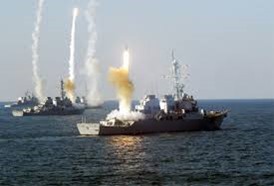 Okinawa Bound: War had once again come to Okinawa, and its citizens could only watch fires burn uncontrollably at the various bases throughout the island. Chinese and North Korean cyberattacks started before the first-strike missiles reached apogee, and evolved into a pitched battle against US, Japanese and South Korean cyber warriors with no clear victors. The battlegrounds at this point were on critical military networks and infrastructure.
Okinawa Bound: War had once again come to Okinawa, and its citizens could only watch fires burn uncontrollably at the various bases throughout the island. Chinese and North Korean cyberattacks started before the first-strike missiles reached apogee, and evolved into a pitched battle against US, Japanese and South Korean cyber warriors with no clear victors. The battlegrounds at this point were on critical military networks and infrastructure.
The Chinese leadership had observed the attack in various command centers and knew the next phase was critical to achieving their war aims. The first chain was anchored by east by mainland Japan and west by Vietnam which would be impractical to conquer; but in-between lay Taiwan and the Japanese island of Okinawa. Breaking or taking both would be necessary to ensure energy security, but also provide a springboard toward the second Island chain in the years to come. It was a task that must succeed…
 Taiwan Blitz: The Okinawa operation was a success. Chinese marines and airborne troops were now in process of restoring basic services to the population and processing significant number of US and Japanese prisoners after winning a hard fought battle. The landings had gone well and the initial land battles were sharp, but having gained air and sea superiority and the arrival of significant follow on forces the Chinese prevailed after three days hard fighting. Japan and the US had lost an important battle and forward position in a lightning war.
Taiwan Blitz: The Okinawa operation was a success. Chinese marines and airborne troops were now in process of restoring basic services to the population and processing significant number of US and Japanese prisoners after winning a hard fought battle. The landings had gone well and the initial land battles were sharp, but having gained air and sea superiority and the arrival of significant follow on forces the Chinese prevailed after three days hard fighting. Japan and the US had lost an important battle and forward position in a lightning war.
China’s military was victorious, but had stretched as far as it had ever gone before. It had carried out significant military operations against four nations in a week’s time and was beginning to feel the strain on its resources. The fighting needed to end shortly so forces could dig in, recover and the politicians who now had significant leverage could end the war favorably. One objective was in the way though: Taiwan.
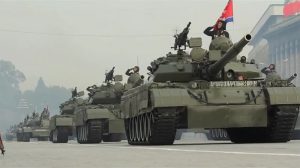 Korean Ground Game: The stunning loss of Okinawa and the EMP strike and subsequent bombardment of Taiwan had two major effects. First, it emboldened the remaining DPRK leadership to order a full mobilization to invade the South. They believed the US and its allies to be mortally wounded, and that the opportunity was at hand to invade and “free” the South before enemy forces could recover. Second the US, South Korea and Japan all realized that they could no longer afford to take the first blow. They must strike first and decisively.
Korean Ground Game: The stunning loss of Okinawa and the EMP strike and subsequent bombardment of Taiwan had two major effects. First, it emboldened the remaining DPRK leadership to order a full mobilization to invade the South. They believed the US and its allies to be mortally wounded, and that the opportunity was at hand to invade and “free” the South before enemy forces could recover. Second the US, South Korea and Japan all realized that they could no longer afford to take the first blow. They must strike first and decisively.
US , Korean and Japanese air forces had suffered greatly during the missile strikes. The Chinese relied on more precise missiles that were able to shatter runways, tarmacs and in some cases penetrate hardened shelters. The North Koreans relied on less accurate high explosive missiles but did use chemical warheads in many cases that sickened and killed military and civilian people by the scores. The butcher’s bill was high – but so was the desire to strike back. The USAF, ROKAF and JASDF were battered and decimated – yet ready to oblige.
 Showpieces: The lightning war in Asia had been horrific with great loss of life all around. China had battered Vietnam and Taiwan into submission, captured Okinawa and pushed Japanese and American forces back into defensive positions around the Japanese homeland. A land war had erupted on the Korean peninsula destroying much of Seoul and ensnaring US and South Korean forces. US Carriers were still a week away and the western media was already beating the drum of a lost war.
Showpieces: The lightning war in Asia had been horrific with great loss of life all around. China had battered Vietnam and Taiwan into submission, captured Okinawa and pushed Japanese and American forces back into defensive positions around the Japanese homeland. A land war had erupted on the Korean peninsula destroying much of Seoul and ensnaring US and South Korean forces. US Carriers were still a week away and the western media was already beating the drum of a lost war.
The Chinese government was quick to capitalize and brought forth a highly favorable (to them) peace settlement at the UN. While much of the U.N. supported such an action in hopes of stopping a brutal conflict, the nations that had suffered attack refused and demanded that China stand down and withdraw forces from Okinawa immediately. The US military was facing its greatest challenge since the Second World War. Instant media reporting had created significant pressure to end the conflict as soon as possible, and with few military victories it would do so at a loss. This was unacceptable to the men and women who had lost comrades and the current President of the United States. The tide must be turned.
 Air-Sea Battle: The sinking of the Chinese carrier was a great victory for the United States and became the high watermark of what the citizens of all the warring nations would calmly persevere. Social and traditional media was delivering an unrelenting stream of the horrors of war on a twenty-four hour basis. Large antiwar movements grew everywhere from Beijing to Washington DC. The pressure was on to end the war. US strategists looked at a map of the Western Pacific and saw their opportunities to do just that. Leveraging the thousand-island environment of the Philippines, a wide network of smaller dispersed bases and airfields, fresh carrier forces newly arriving in-theater and the alliance with Australia, the US was shaping the coalition that would spearhead the final assault at Chinese expeditionary forces.
Air-Sea Battle: The sinking of the Chinese carrier was a great victory for the United States and became the high watermark of what the citizens of all the warring nations would calmly persevere. Social and traditional media was delivering an unrelenting stream of the horrors of war on a twenty-four hour basis. Large antiwar movements grew everywhere from Beijing to Washington DC. The pressure was on to end the war. US strategists looked at a map of the Western Pacific and saw their opportunities to do just that. Leveraging the thousand-island environment of the Philippines, a wide network of smaller dispersed bases and airfields, fresh carrier forces newly arriving in-theater and the alliance with Australia, the US was shaping the coalition that would spearhead the final assault at Chinese expeditionary forces.
The Chinese leadership and military were intent on holding out on their new possessions, to inflict one final great blow to American forces and then trust that the war-weary American public would force an end to conflict. It was well known for decades that the decisive battle would be the Chinese naval strike complex versus surged US carrier groups, and Chinese forces intended to win. It would be the greatest and most decisive battle in Chinese history.
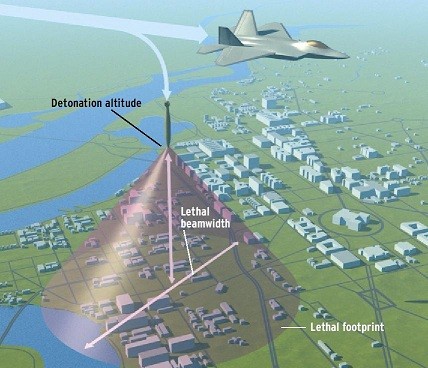 Hail Mary: US and Australian forces had not only destroyed most of the valuable infrastructure in the Spratly Islands but moved their forces into the far more secure waters of the Philippine Islands, putting them in range to strike the Chinese homeland and open up bases for the air forces to utilize for strikes. Numerous bases were secretly opened up across the region ready to receive US and AU air power. The Eagles had come to face the Dragon.
Hail Mary: US and Australian forces had not only destroyed most of the valuable infrastructure in the Spratly Islands but moved their forces into the far more secure waters of the Philippine Islands, putting them in range to strike the Chinese homeland and open up bases for the air forces to utilize for strikes. Numerous bases were secretly opened up across the region ready to receive US and AU air power. The Eagles had come to face the Dragon.
China however was far from beaten. It had lost its ability to project power past the first chain but still held them, which was one of their big war aims. It still possessed great defensive strength and with US forces now in range of it could now decisively defeat US and Australian naval and air forces in one great decisive battle. Victory would eject the Americans and their allies from the region permanently. The final decisive battle was now at hand.
Bonus standalone scenarios
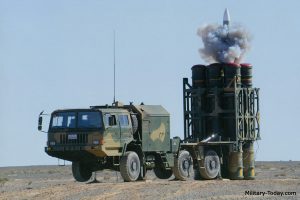 Reds (2005): WWIII kicked off in 1985 and ended after two short months at the threat of a large scale nuclear exchange. Warsaw Pact forces had pushed into West Germany, only to be thrown back to the Polish border. The war ended at the negotiation table. Both sides’ conventional forces had suffered greatly but the battleground states in Europe and Asia were utterly decimated. US forces returned home and began the process of restructuring and rebuilding.
Reds (2005): WWIII kicked off in 1985 and ended after two short months at the threat of a large scale nuclear exchange. Warsaw Pact forces had pushed into West Germany, only to be thrown back to the Polish border. The war ended at the negotiation table. Both sides’ conventional forces had suffered greatly but the battleground states in Europe and Asia were utterly decimated. US forces returned home and began the process of restructuring and rebuilding.
The Soviet Union and the Politburo had suffered a near-defeat but managed to maintain its grip on power by what was done at the negotiation table. The population largely believed the conflict was once again started by Germany and the Union was valiantly defended by its men at arms once again. China on the other hand had prospered greatly. Exports boomed as China’s cheap consumer goods covered the gaps left by destroyed industries. But the Chinese Premier and Politburo had greater plans. Corruption within the Soviet system had destroyed a powerful empire and all that was left was a den of beggars and thieves. The people in the Russian Far East were not being served well and would only further suffer in the hands of Moscow. They must be liberated. The second Sino-Soviet Conflict thus began.
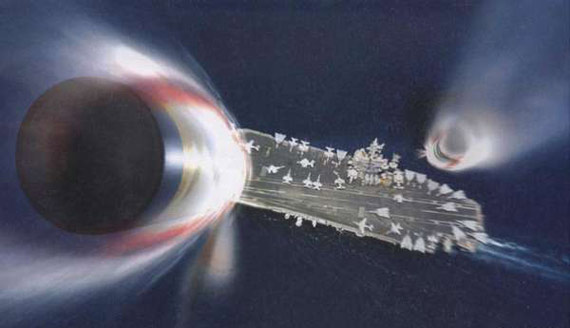 Armed Diplomacy (1996): China had nearly gone to war with the United States over Taiwan in 1996. Tensions were high as the movement to proclaim Taiwanese independence from the mainland had gained steam due to legislative elections in 1995, and then a Taiwanese presidential election in March 1996 that would choose a new president by popular vote. China and the United States both used visual demonstrations of military force that further escalated the situation. China responded directly to the presidential visit by conducting ballistic missile tests just eighty five nautical miles north of Taiwan in July 1995 into known international shipping lanes, effectively blockading them, and then followed up with naval exercises just northwest of the missiles’ splash zones. In December 1995 China conducted significant air and amphibious assault exercises timed to coincide with, and intimidate, the Taiwanese Parliamentary Election. The United States responded by sending the USS Nimitz carrier battlegroup through the Straits of Taiwan in a show of force.
Armed Diplomacy (1996): China had nearly gone to war with the United States over Taiwan in 1996. Tensions were high as the movement to proclaim Taiwanese independence from the mainland had gained steam due to legislative elections in 1995, and then a Taiwanese presidential election in March 1996 that would choose a new president by popular vote. China and the United States both used visual demonstrations of military force that further escalated the situation. China responded directly to the presidential visit by conducting ballistic missile tests just eighty five nautical miles north of Taiwan in July 1995 into known international shipping lanes, effectively blockading them, and then followed up with naval exercises just northwest of the missiles’ splash zones. In December 1995 China conducted significant air and amphibious assault exercises timed to coincide with, and intimidate, the Taiwanese Parliamentary Election. The United States responded by sending the USS Nimitz carrier battlegroup through the Straits of Taiwan in a show of force.
Finally in March 1996, the month of elections, China conducted significant air and naval exercises as well as a missile exercises with splash zones fifty nautical from both of Kaohsiung and Keelung, effectively blockading Taiwan’s largest ports. The United states had responded by sending both the Nimitz and Independence battlegroup to show its resolve in defending Taiwan.
Politics Are Local (1958): Tensions between the Republic of China and the Peoples Republic of China in the 1950s resulted in armed conflict over many small islands in the Taiwan Strait. The ROC and PRC both looked at these islands as possible staging points for invasion into each other’s homeland. The PRC bombarded these islands on two separate occasions and the ROC used them to harass shipping and bombard the mainland on numerous occasions. With the global Cold War growing, the United States intervened on behalf of the Republic of China which angered the PRC and started a long history of animosity between the two powers.
The historical outcome was several skirmishes and numerous bombardments, but cooler heads prevailed and nuclear war was once again averted. The outcome of this scenario will be quite different. The goal is to help players understand why China perceives American carrier power as a threat to its interests and its limitations in restricted waters.
Paracel ’74 Clash (1974): The first notable naval battle conducted by China over an island chain in the South China Sea was against the South Vietnamese over the Paracel Islands in 1974. Seizing the opportunity given by the greater Vietnam War, China landed a small force in the contested Paracel islands to test its claim to the islands. When discovered, the South Vietnamese Army and Navy reciprocated leading to a sharp land skirmish and sea battle. Both sides suffered significant casualties but the Chinese prevailed, winning its claim to the islands. This would soon be superseded by South Vietnam losing the greater Vietnam war, however China and Vietnam would find themselves at general war soon after and then skirmishing over the Spratly Island chains in the late 1980s. It would set a precedent of conflict between the two nations, but also the Chinese will to use military force to back historical claims in the region.
————————————————–
This concludes our pre-release coverage of Chains Of War. We hope you will enjoy playing the new scenarios and using the new and improved features as much as we did during development!
We also hope that, beyond merely having an entertaining and exciting experience, you will gain a better understanding of the region, the players, the major issues and the stakes. Nations generally do not go to war on a whim, but they frequently cross red lines because they misjudge intentions and capabilities – of their own as well as those of their adversaries & allies. If, after having a blast with Chains Of War, you seek out more authoritative & comprehensive sources (a book, a documentary, your grandfather’s stories from his time in Japan or Korea, anything) to obtain a better insight on the balance in the western Pacific, our job as wargame creators will be done.
“Never tell a soldier that he does not know the cost of war.” – Alan Rickman (RIP), Eye in the Sky (2016)
Comments
Leave a Reply
You must be logged in to post a comment.





